Electronic Reuse emerged to promote the circular economy. Through this digital community many electronic devices can be repaired to extend their useful life.
The consumer market has extended the concept of buying new electronic devices. Many individuals and organisations, out of habit, will change their electronic equipment every 5 years. This is the standard payback period for a computer, as explained in many accounting courses. With this constant renewing of equipment, we are encouraging an economy that basically benefits large electronic device commercialisation corporations.
Despite these widespread dynamics, we are starting to see alternatives emerging that promote the reuse of electronic devices as well as the redistribution of wealth towards local markets. One example is Electronic Reuse, a community that was created by several Catalan organisations, official bodies and universities.
To learn more about eReuse we interview David Franquesa, one of the persons behind this project.
Give us some background. What is the circular economy?
Circular economy is a proposal to shift from a linear consumerism to a circular one. To do this, we must follow these steps in this precise order: Firstly, we have a product that we must keep for as long as possible, and to do this we must apply reuse actions. Secondly, we have a product or component (hard drive…) that nobody wants to reuse, so we recover the prime materials in it to produce a new component. Third, we can’t recover the prime materials because we don’t know how to, so we burn it to generate energy. This order is very important; the legitimacy in moving from step one to step two, from step two to step three is key.
Why is a circular economy so important in the filed of electronics?
A circular economy is especially important in the context of digital devices. When producing digital devices we use non-renewable, toxic and scarce resources that come from conflict zones and create conflicts such as the Coltan war in 2003 that killed 4 million people. These resources are refined and turned into components that are then assembled in conditions that could be described as slavery, in countries like China, to then offer you an end product like a mobile phone, which if not reused, very quickly becomes waste. By recycling you only recover a small proportion of the prime materials that are in it, if done properly. Today, in Europe, 65% of waste ends in dumps, polluting places like Agbogbloshie in Ghana.
The pollution caused by this linear consumerism is warming the planet, polluting land and water. According to the United Nations, as a consequence of climate change, in the next 30 years there will be 50 to 200 million displaced people, who will be climate refugees. How can we fix this? How about reducing consumerism following the three R’s? This would be ideal, but the truth is that there are more phones than people in this world, and figures are growing.
So, reusing is an important aspect to bear in mind, right?
Reusing is the second of the three R’s. A digital device that is repaired, improved in terms of features or is channelled to other users with traceability until it’s recycled entails a whole series of benefits: it avoids generating waste and producing more devices; it favours the social economy; it reduces the risks of spills; increases the recovery of prime materials; it discourages illegal exports, fosters digital inclusion and can generate learning at educational centres.
Unfortunately, despite these eight benefits of reusing, almost all devices coming from the public administrations and private corporations are recycled (destroyed) too soon, when the pay off and the guarantee expires, even if they could still be reused locally. Every time a device is destroyed we also lose an opportunity to change the model of linear consumption for a circular and social economy.
And from here to Electronic Reuse. What is it exactly?
Electronic Reuse (eReuse.org) is a community of activists, researchers, universities, education centres, organisations that restore and distribute computers, institution and generally everyone that promotes a circular economy in the field of electronics. Our mission is to raise awareness in society so that we are able to avoid a premature recycling of digital devices by promoting their reuse. Reusing is about actions carried out on products and components such as repairing, improving, updating, re-manufacturing and passing them on to other users.
Participants in eReuse build local community reuse circuits and develop, maintain and improve free software resources, as well as offering services that help optimizing the reuse and allow to trace devices and their components throughout their entire life cycle. These circuits can use the technology created by eReuse in 2011. Working in the community and at a local level allows us to escalate and contain the development costs, and hence avoid proprietary solutions.
How many electronic devices have you registered until now?
Right now participants in eReuse are managing thousands of devices in their circuits every year. As for Pangea community circuit, we have managed around 1,000 devices with a value of over 50,000 Euro and generated a saving in the digital invoice of 50,000 Euro more, because the Pangea circuit, which is one of the local circuits, guarantees that the value of the circular economy costs are 50€ below the market value and also a part of the devices are given for free.
How can an organisation participate in eReuse?
They can join the community circuit by offering their services or using their resources such as tools, licences, agreement templates… to create their own circuits. They could also be an organisation that develops software or provides software as a service, and it would be great if they provided innovative solutions needed in the circuit. If we need to improve the tools, we will use some of our development funds for this purpose.

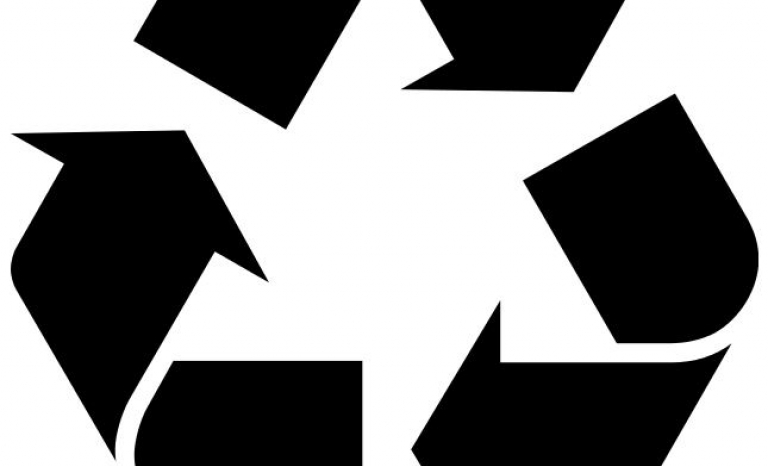

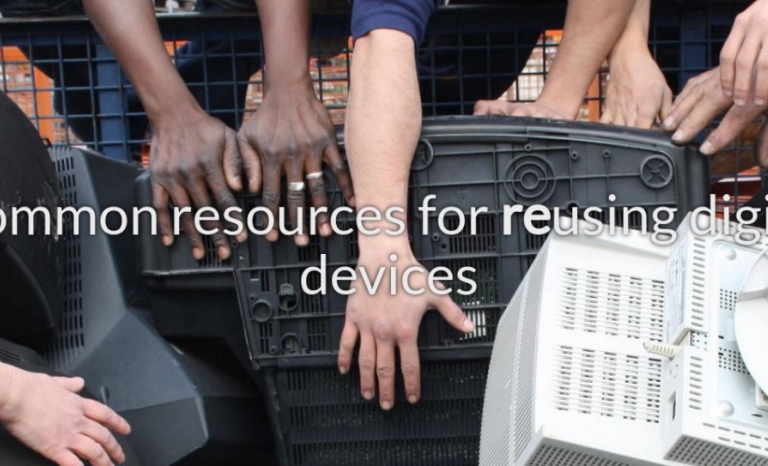
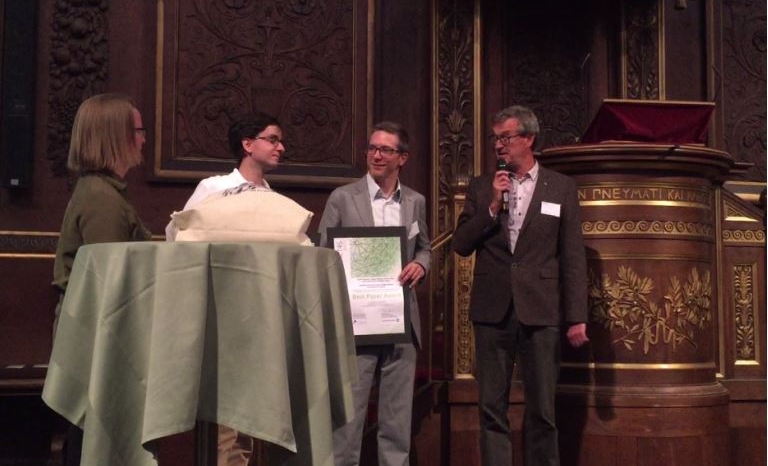
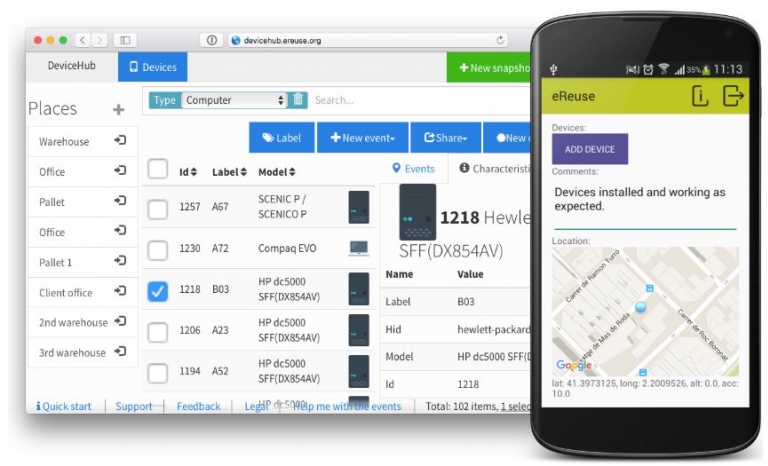
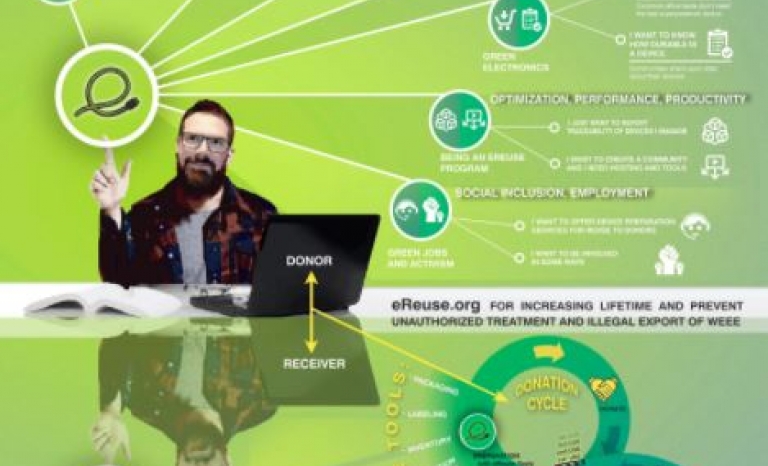
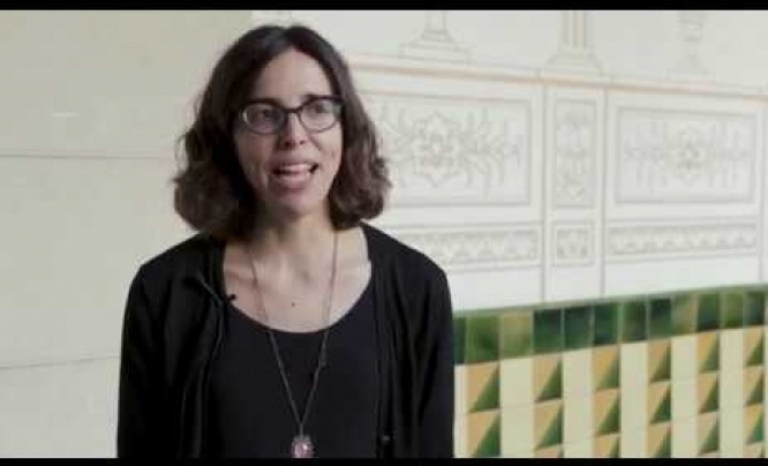



Add new comment